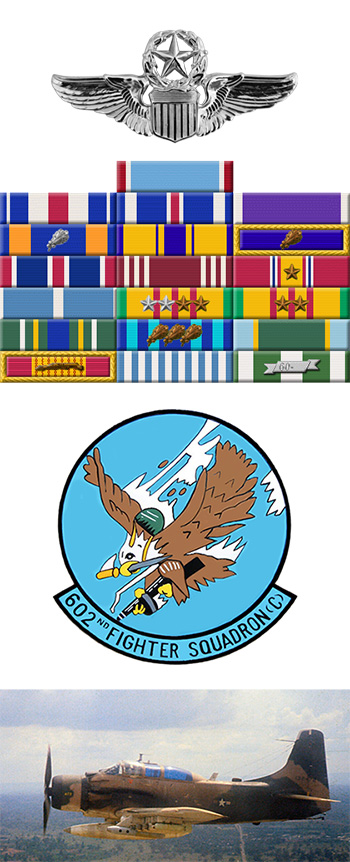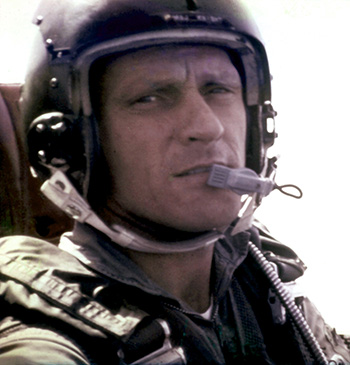
|
Roy A. Knight, Jr. |
 |
|||
| Rank, Service | ||||
Colonel O-6, U.S. Air Force |
||||
| Veteran of: | ||||
|
||||
| Tribute: | ||||
Roy Knight was born on February 1, 1931, in Garner, Texas. He enlisted in the U.S. Air Force on February 10, 1948, and after completing basic training, he was trained as a personnel clerk. His first assignment was with the 7th Air Base Group at Castle AFB, California, from November 1948 to December 1949, followed by service at Hamilton AFB, California, from December 1949 to January 1950. Sgt Knight served as a clerk with the 24th Aircraft Repair Squadron at Clark AB in the Philippines from February 1950 to February 1952, and then with Headquarters 13th Air Force at Clark AB from February to March 1952. His next assignment was with the 3585th Air Base Group at San Marcos AFB, Texas, from March 1952 to February 1953, followed by Officer Candidate School from February 1953 until he was commissioned a 2d Lt in the U.S. Air Force at Lackland AFB, Texas, on September 11, 1953. After completing the Personnel Officer Course at Scott AFB, Illinois, Lt Knight served as a personnel officer with the 58th Maintenance & Supply Group at Itazuke AB, Japan, and Teagu AB, South Korea, from March to October 1954, and then with the 8th Field Maintenance Squadron at Itazuke AB from October 1954 to April 1957. He then attended pilot training, earning his pilot wings at Moore AFB, Texas, in April 1958, followed by F-86 Sabre Combat Crew Training from April to October 1958. Capt Knight served as an F-86 pilot with the 440th Fighter Interceptor Squadron at Erding AS, West Germany, from January 1959 to January 1960, and then with the 513th Fighter Interceptor Squadron at Phalsgourg-Bourscheid AB, France, from February to December 1960. His next assignment was as an Operations Controller with Detachment 1, Headquarters 10th Tactical Reconnaissance Wing at Toul-Rosieres AB, France, from December 1960 to July 1962, followed by service as a Duty Controller and pilot with the 7544th Combat Support Group at Toul-Rosieres AB from July 1962 to January 1963. After attending the Pilot Instructor Training Course at Randolph AFB, Texas, Capt Knight served as a flight instructor with the 3645th Pilot Training Squadron at Laughlin AFB, Texas, from April 1963 to August 1966. During this time, he completed his bachelor's degree with an Operation Bootstrap assignment to the University of Omaha from July 1965 to January 1966. Maj Knight next completed A-1 Skyraider Combat Crew Training, and then deployed to Southeast Asia where he served as an A-1 pilot with the 602nd Fighter Squadron at Udorn Royal Thai AFB, Thailand, from February 1967 until he was killed in action over Laos on May 19, 1967. He was officially listed as Missing in Action until September 1974, during which time he was promoted through the ranks to Colonel. Roy Knight's remains were returned to the United States in February 2019, and were positively identified in June 2019. Col Roy Knight was buried at Holders Chapel Cemetery in Cool, Texas, on August 10, 2019, next to his brother, 1st Lt Jack Llewellyn Knight (1917-1945), who was posthumously awarded the Medal of Honor during World War II; his brother Curtis Lawrence Knight (1919-2013), who was awarded the Silver Star during World War II; his brother Herchel Neal Knight (1924-2010); and his brother Robert Clinton Knight (1926-1973). |
||||
|
||||

